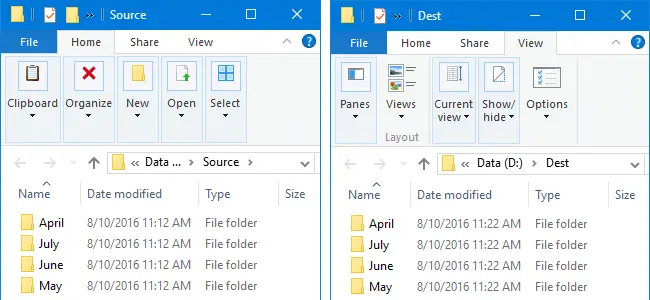

You can do this by searching “cmd” in Run and pressing the Ctrl+Shift+Enter keys or by right-clicking on its app icon and selecting Run as administrator. With move, you can move your files/folders by running:ĭo note that you need administrative access on your system to move files/folders around, so make sure you’re running CMD as an administrator before carrying out such operations. Occasionally, however, when you want to relocate a file or directory to a different location and don’t want an extra copy, you need the move command. Using the copy command, you can create a copy of a file on some other location on your computer. Similarly, if there’s a need to combine two files into a new file, enter:Ĭopy file_name_1 + file_name_2 file_name_3 5.

When you want to copy a file from a different folder:įor copying multiple files of the same type in a folder to another location:

To copy a file from an existing directory, use the following syntax: And, you can even use it to combine multiple files. It comes with a few different switches to help you extend its scope of use and put it to use for your different requirements. Rename C:\Users\Dell\Documents\File1.txt File2.txtĪs its name suggests, the copy command allows copying file(s) from one location on your system to another. If you want to rename the files in other folders, prepend their path before the filename. Run your command in the following syntax to rename a file: The rename command enables you to rename files and folders on your computer right from the command line. Once done, hit Ctrl + Z to save the file.Īlternatively, if you want to create a single-line text file, you can also use the echo command:Įcho your_text_here > file_name_with_extension 3. …and start populating the file with text. Although this is perfectly acceptable, there is another (read efficient) way to accomplish this: it involves running the copy con command in the CMD window to speed up the entire process. If you haven’t used the command prompt much before, you’re probably using Windows’ GUI to create new files. In case you still can’t file your document, you can narrow down your search to a specific set of files:įind /i "command prompt commands" *.txt 2. To search for text in multiple documents:įind /i "query_string" path\to\file1 path\to\file2 …where /i is a switch to avoid case-sensitive searching.įind /i "command prompt commands" C:\Users\Dell\Documents\Commands.txt So if you’d like to search for a string in a specific file, you’ll need to run: It lets you search for a string in a file or multiple files and returns the lines that contain the text you specified in your query.
#COMPARE FOLDERS IN USING COMMAND PROMPT WINDOWS#
Findįind is one of the most useful Windows CMD commands. With that done, all you have to do now to run a command is to type in the command and hit the Enter key.


 0 kommentar(er)
0 kommentar(er)
